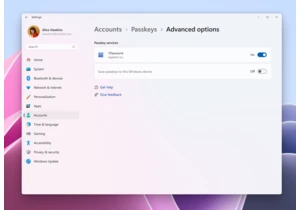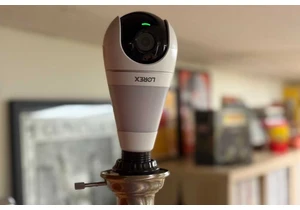Expert's Rating
Pros
- Excellent benchmark performance
- PCIe 5.0
- Less power draw than the T705
- Reasonably priced for the category
Cons
- Note quite as fast in the real world as some others
Our Verdict
With less power draw and better benchmark results, Crucial’s T710 is a worthy new member of the company’s NVMe SSD lineup.
Price When Reviewed
This value will show the geolocated pricing text for product undefined
Best Pricing Today
Crucial’s T710 is a very fast addition to a worthy stable of NVMe SSDs from the company. It’s marginally faster than the older T705, though it didn’t beat out its sibling in every test.
What are the Crucial T710’s features?
The Crucial T710 sports 232-layer Micron TLC NAND which is handled by a new Silicon Motion SM2508 controller. Being a single-sided 2280 (22 mm wide, 80 mm long), PCIe 5.0, NVMe 2.0 SSD, it’s suitable for just about any Windows PC or laptop.
Peeling back the label on our 2TB test drive revealed a single Micron SDRAM which according to Crucial is 2GB on our drive as well as the 1TB model, with 4GB on the 4TB capacity.
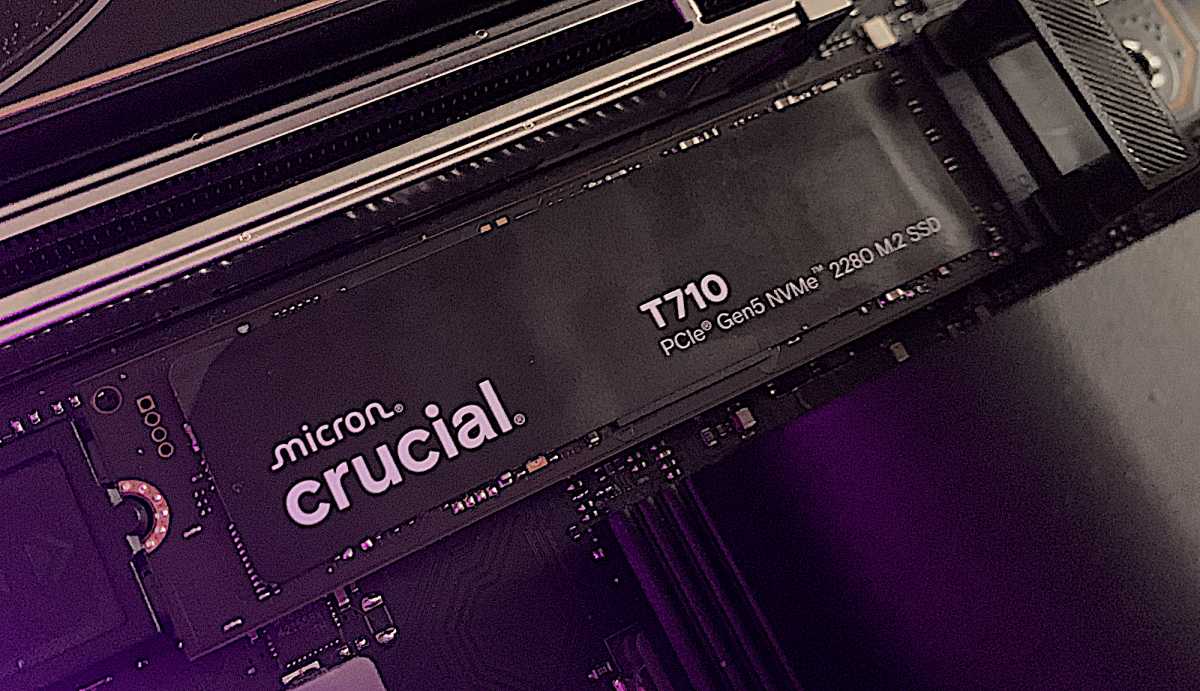
We don’t measure power draw, but Crucial claims a 24% reduction in power use compared to the older Phison-based T705 — always good news for laptop users. That said, there are still a lot of other power hungry components in the laptop battery life calculation, so don’t expect miracles from an upgrade.
Crucial warranties the T710 for five years and 600TBW (TeraBytes that my be Written before read-only) per Terabyte of capacity. That means you can write about that much data before the drive won’t let you write anymore — theoretically.
In practice, SSDs track the number of worn-out cells and the spares available to replace them, then go read-only when the latter run out. The TBW rating is just an estimate of when that will occur, and is basically linked to the warranty so that consumer-priced SSDs aren’t used in high-volume servers that run them dry in less than the warranty period.
How much is the Crucial T710?
Like its older T705 brother the T710 is available with or without a heatsink. For the 1TB version the different versions cost $199.99/$179.99 respectively, for the 2TB it’s $299.99/$279.99, and for the 4TB $569.99/$549.99. Those prices are about average for a DRAM-endowed PCIe 5.0 MVMe SSD.
Crucial did not send me a version with the heatsink, but if it’s anything like the ones that shipped with the T705 – it’s beefy indeed. The majority of users will not need the heat sink, but if you’re one that does rest assured, this one will do the job.
How fast is the Crucial T710?
As a successor to one of the fastest PCIe SSDs we’ve tested (it was fastest at its test date), the T705, we were expecting great things from the T710. Well.. depending on the test, it’s a bit greater — or not quite as great.
Note that we have revamped our test bed, and to some extent our testing MO, so these numbers are only directly comparable to the drives listed in these charts. Older results are ballpark so not completely out of line for comparison purposes.
According to CrystalDiskMark 8, the T710 offers a nice improvement in sustained throughput over the older T705 — especially with only a single queue, which is still what Windows uses for file transfers.
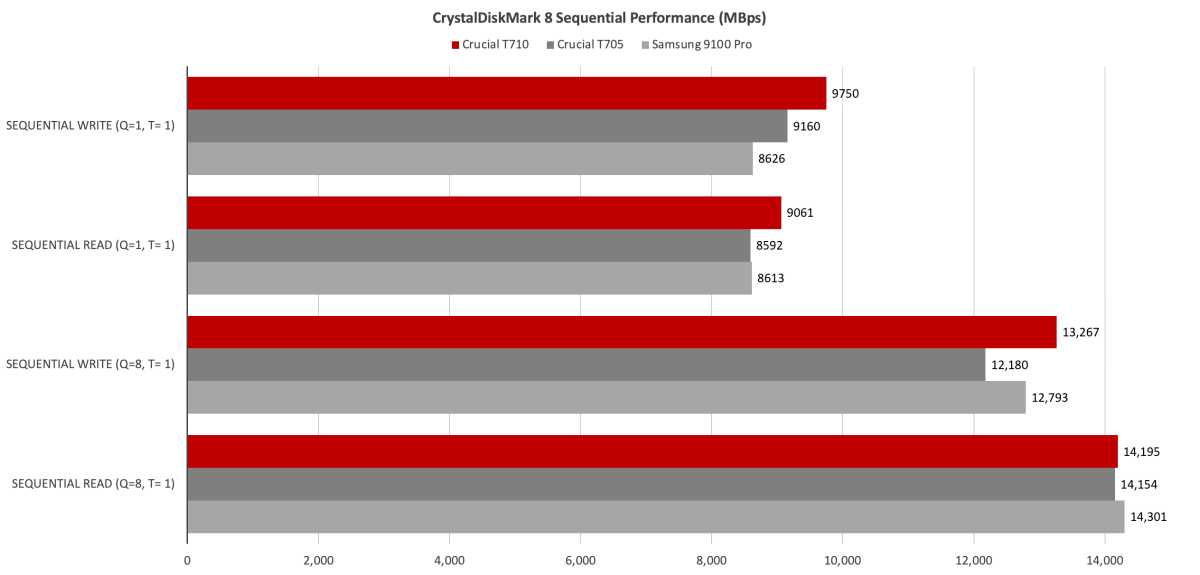
The Crucial T710’s single-queue random performance is also slightly improved over the T705, which is again, the most important test as regards current Windows. But multi-queue performance is a bit weaker, which might show up in programs that use their own multi-threaded I/O.
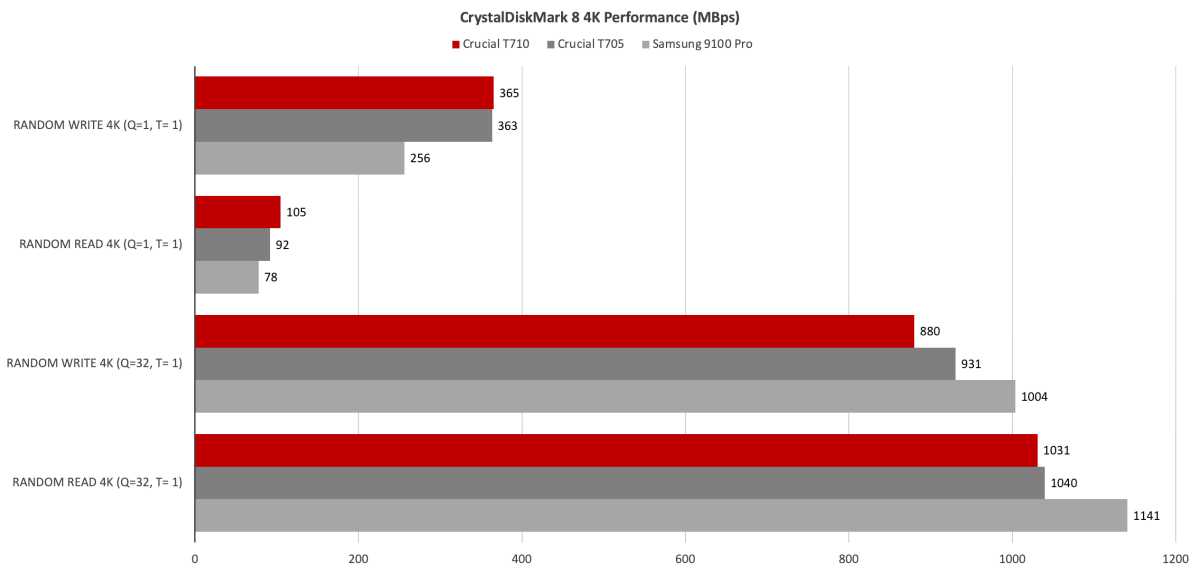
The T710 improved in Windows Explorer over the T705, but was slower in most of the other tests which now include DiskBench and the command line Xcopy run in batch files. If these results seem very close — they are. To the point where they’re not particularly useful for comparing drives, only to see what performance is like in real life transfers. XC is xcopy, DB is DiskBench, and the last four are Windows Explorer drag and drop.
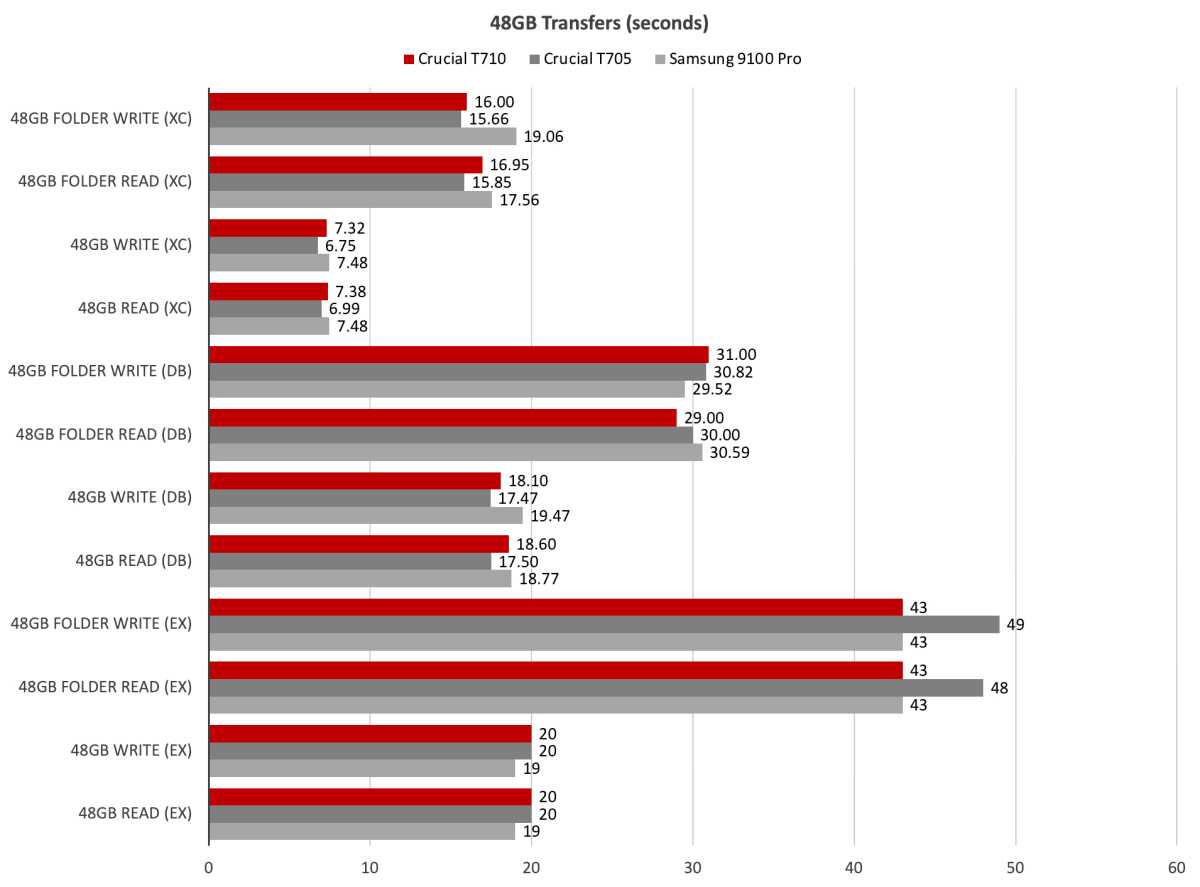
Where the Crucial T710 proved a disappointment was in the 450GB write, which we now perform with Windows Explorer, DiskBench, Xcopy, and FastCopy. All four showed the drive lagging behind both the T705 and Samsung 9100 Pro in this test.
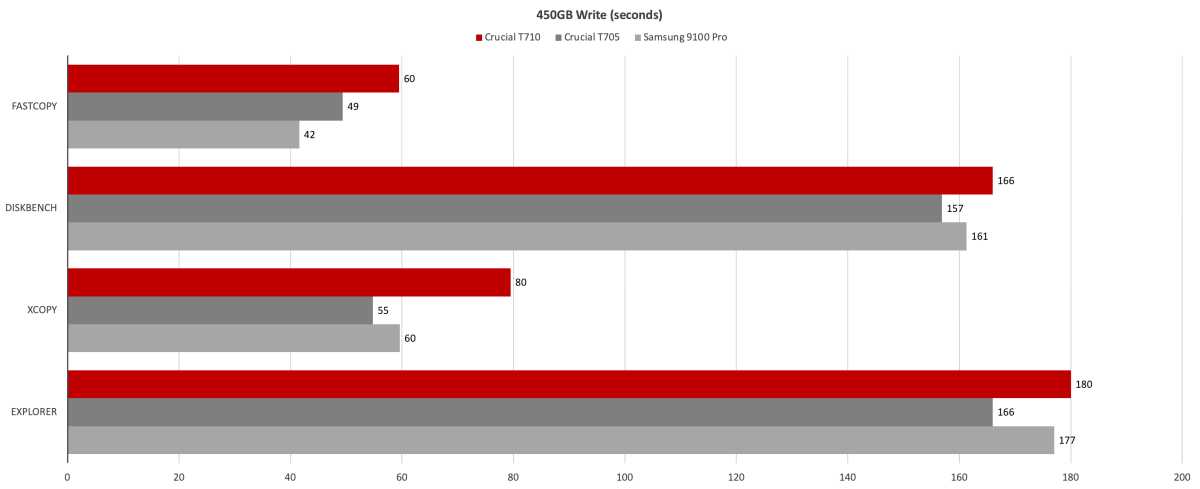
All in all, the T710 is a very good performer, though not the best of the PCIe 5.0 lot for large file transfers.
Some current technology notes: the Z890/Intel Core Ultra combo we now use is found to be less adept at PCIe M.2 NVMe than the older Z790. Because of this, we use adapter cards in the PCIe 5.0 slots for testing.
Should I buy the T710?
Yes, it’s a very fast SSD. But it’s not the fastest and not a huge improvement over the T705. In short, either the Crucial T705 or this newer T710 will do nicely. Base any buying decision on price — the performance difference between DRAM-based PCIe 5.0 SSDs simply isn’t all that significant.
How we test
Drive tests currently utilize Windows 11 24H2, 64-bit running off of a PCIe 4.0 Samsung 990 Pro in an Asus Z890-Creator WiFi (PCIe 4.0/5.0) motherboard. The CPU is a Core Ultra i5 225 feeding/fed by two Kingston Fury 32GB DDR5 4800MHz modules (64GB of memory total). Both 20Gbps USB and Thunderbolt 5 are integrated and Intel CPU/GPU graphics are used. SSDs involved in the test are mounted in a HighPoint 7604A 16x PCIe 5.0 adapter card.
We run the CrystalDiskMark 8, AS SSD 2, and ATTO 4 synthetic benchmarks to find the storage device’s potential performance, then a series of 48GB and 450GB transfers tests using Windows Explorer drag and drop, DiskBench, Xcopy, and FastCopy to show what you’ll actually see under Windows as well as what’s possible.
The 48GB transfer tests utilize an USFMount RAM disk taking up 58GB of the 64GB of total memory. The 450GB file is transferred from a 2TB Samsung 9100 Pro.
Each test is performed on a newly NTFS-formatted and TRIM’d drive so the results are optimal. Note that in normal use, as a drive fills up, performance may decrease due to less NAND for secondary caching, as well as other factors. This can be less of a factor with the current crop of SSDs with far faster late-generation NAND.
Caveat: The performance numbers shown apply only to the drive we were shipped and to the capacity tested. SSD performance can and will vary by capacity due to more or fewer chips to shotgun reads/writes across and the amount of NAND available for secondary caching. Vendors also occasionally swap components. If you ever notice a large discrepancy between the performance you experience and that which we report, by all means, let us know.
Login to add comment
Other posts in this group

As promised, the U.S. retail prices of several key Philips Hue produc
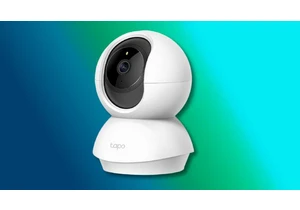
Whether you’re a parent who wants to keep an eye on your kids even af

Between email, calls, texts, and now an unending torrent of AI slop,

Google has released an emergency update for Chrome, fixing a vulnerab
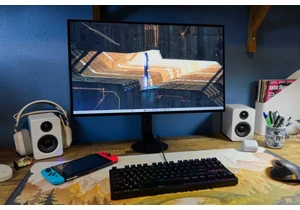
Sony makes gaming monitors. I know, it’s kind of a shock, right? I ha
